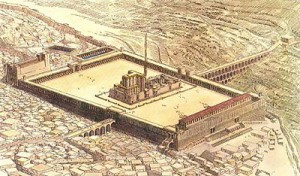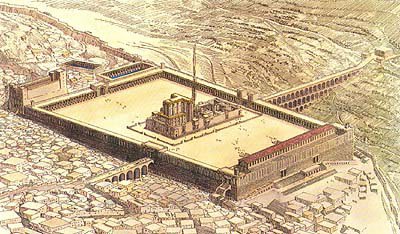The New York Times recently published an article that was so appallingly flawed and dangerous that it simply beggars belief. Its subsequent “clarification” only serves to highlight how bad it was.

The article, Historical Certainty Proves Elusive at Jerusalem’s Holiest Place, was a masterpiece of obfuscation and falsehood. It took minor academic debate about the precise location of the Temple – was it a few hundred feet this way, or a few hundred feet that way – and presented that as lying at the heart of competing Israeli and Palestinian narratives about claims to the land, and even as raising questions about the very existence of the Temple.
The reality, however, is that the precise location of the Second Temple (and even the very existence of the First Temple) is entirely irrelevant to the Israeli-Palestinian conflict. All that is relevant is the existence of the Second Temple in Jerusalem. And all that should be reported, and hammered home, is that outside the Arab world it is recognized as absolute historical fact that there was a Jewish Temple in Jerusalem. The Palestinians, on the other hand, deny this basic historical fact. And therein lies the reason why the Israeli-Palestinian conflict cannot be peacefully resolved. As long as Palestinians refuse to acknowledge the historical connection of the Jewish People to the Land of Israel, and falsely portray us as nothing more than European colonialists, there is no hope of their accepting our living in Israel.
Subsequent to the NYT article, there was an uproar. The NYT was forced to add the following clarification:
Correction: October 9, 2015
An earlier version of this article misstated the question that many books and scholarly treatises have never definitively answered concerning the two ancient Jewish temples. The question is where precisely on the 37-acre Temple Mount site the temples had once stood, not whether the temples had ever existed there.
As the archive of the article shows, the crucial sentence had originally read as follows:
The question, which many books and scholarly treatises have never definitively answered, is whether the 37-acre site, home to Islam’s sacred Dome of the Rock shrine and Al Aqsa Mosque, was also the precise location of two ancient Jewish temples, one built on the remains of the other, and both long since gone. (emphasis added)
After the correction, it read instead like this:
The question, which many books and scholarly treatises have never definitively answered, is where on the 37-acre site, home to Islam’s sacred Dome of the Rock shrine and Al Aqsa Mosque, was also the precise location of two ancient Jewish temples, one built on the remains of the other, and both long since gone. (emphasis added)
A number of other modifications had to be made in order to make the article technically correct, though it was of course still entirely misleading.
Let’s get things straight here. This is not a minor technical error, to be be clarified in a subsequent footnote. This is a fundamental perversion of the most prominent conflict in modern times. There are few things more central to the Israeli-Palestinian conflict than recognizing the historical connection of the Jewish People to the Land of Israel, and recognizing the Palestinian’s refusal to acknowledge this historical fact. The New York Times managed to completely distort this.
Historical certainty about Jerusalem’s holiest place does not prove elusive in the least. Journalistic accuracy in the New York Times about the most fundamental aspect of the world’s most prominent conflict, on the other hand, proves very elusive indeed.

